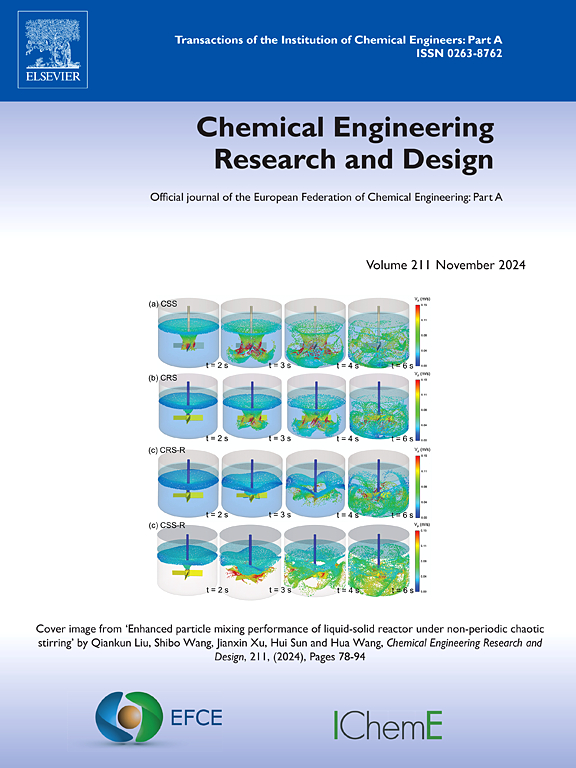Evaluating the accuracy of electrochemical techniques in predicting the industrial alkaline hydrogen production electrolyzer performance: Impacts of electrocatalyst surface changes
IF 3.7
3区 工程技术
Q2 ENGINEERING, CHEMICAL
引用次数: 0
Abstract
This study explored the effectiveness of electroanalytical techniques, encompassing cyclic voltammetry, Tafel standards, and chronoamperometry, in predicting hydrogen production in industrial-scale electrolyzers. A three-electrode cell was utilized to investigate four electrodes made of pure Ti and nanostructured TiO2, Ag, and Ag+TiO2, which were synthesized and applied as hydrogen source cathode electrodes in an industrial setting. The findings indicated that the sequence of electrode activity derived from cyclic voltammetry measurements (TiO2>Ti>Ag>Ag+TiO2) differed markedly from that observed at the industrial scale (TiO2>Ag>Ag+TiO2>Ti). The Tafel slope for each coated electrocatalyst yielded two distinct scan rate values, while a singular value was observed for pure Ti. Chronoamperometry studies indicated that the performance arrangement of the electrodes resembled that found in industrial systems. The observed differences in behavior between chronoamperometry and cyclic voltammetry studies can be explained by the fact that chronoamperometry is based on concentration gradients, while cyclic voltammetry is based on change in potential. All nanostructured electrodes exhibited non-Cottrellian behavior, indicating that hydrogen evolution from the nanoparticle-enriched electrodes significantly differed from that expected from the pure one. Nanoparticle-modified electrode specialists must conduct more examinations because present electroanalytical methods cannot reliably predict industrial nanoelectrode performance improvements. Kinetic parameters such as diffusion coefficient, concentration gradient, exchange current density, transport coefficient, and diffusion layer thickness were also analyzed.
求助全文
约1分钟内获得全文
求助全文
来源期刊

Chemical Engineering Research & Design
工程技术-工程:化工
CiteScore
6.10
自引率
7.70%
发文量
623
审稿时长
42 days
期刊介绍:
ChERD aims to be the principal international journal for publication of high quality, original papers in chemical engineering.
Papers showing how research results can be used in chemical engineering design, and accounts of experimental or theoretical research work bringing new perspectives to established principles, highlighting unsolved problems or indicating directions for future research, are particularly welcome. Contributions that deal with new developments in plant or processes and that can be given quantitative expression are encouraged. The journal is especially interested in papers that extend the boundaries of traditional chemical engineering.
 求助内容:
求助内容: 应助结果提醒方式:
应助结果提醒方式:


